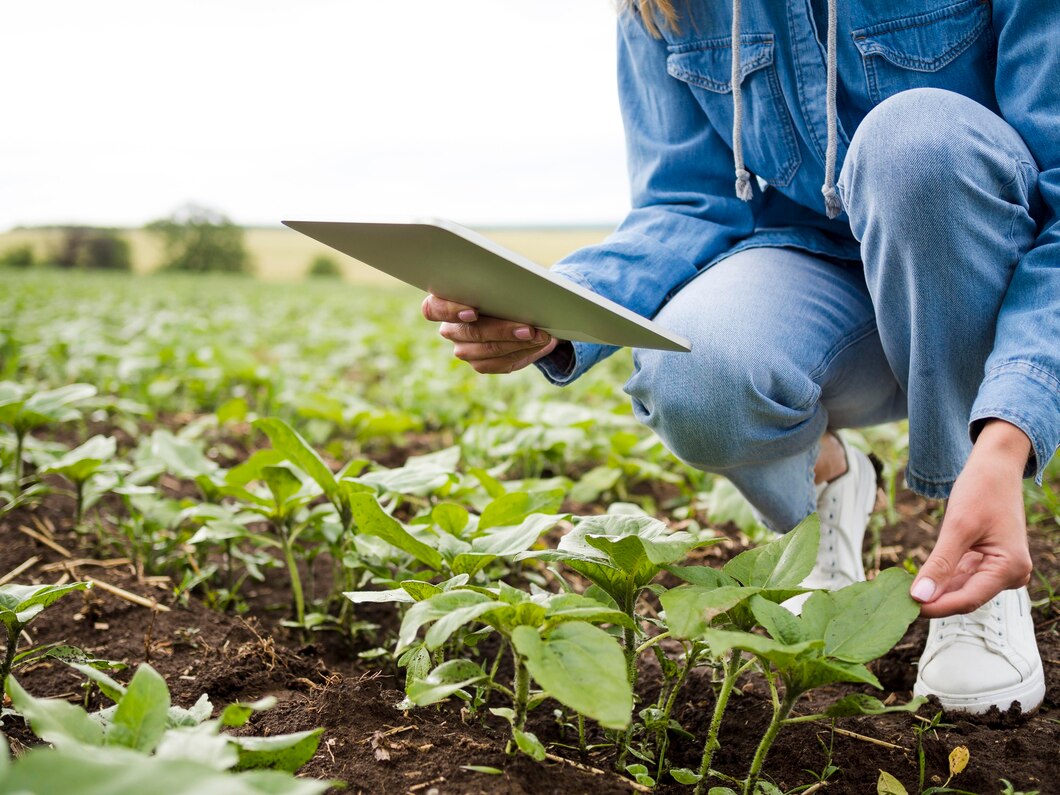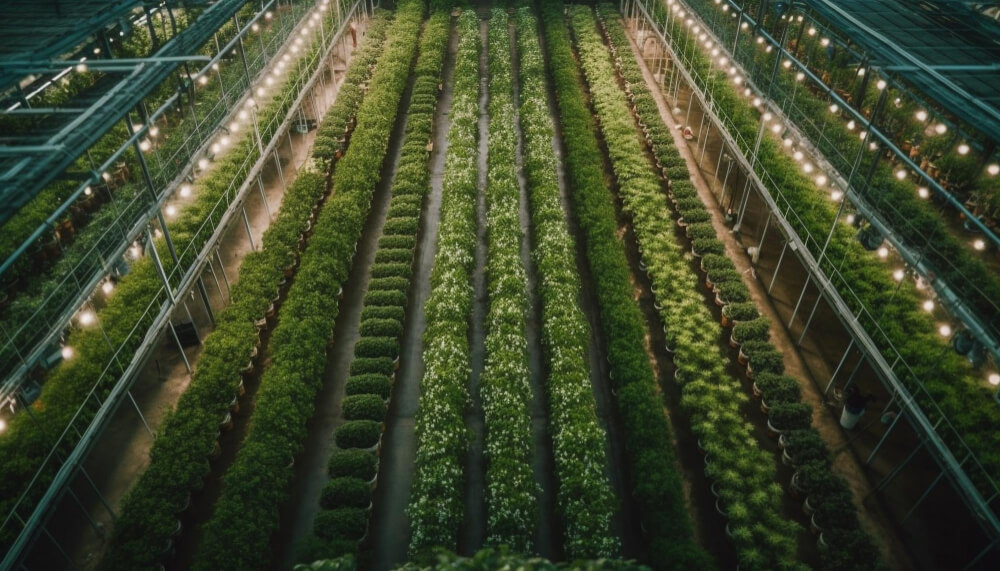The future of agriculture is contingent on creative solutions that reconcile production and sustainability. Increased global temperatures, unpredictable weather patterns, and degrading soil quality have introduced fresh challenges to farmers globally. Climate-smart agriculture is an integrated approach that brings together sustainable techniques in an effort to enhance resilience, decrease greenhouse gas emissions, and defend food systems. Underpinning the approach is the application of regenerative soil practices, which rebuilds soil health, biodiversity, and the capacity of the land to sequester carbon and retain water.
Auxofarm is also moving to the forefront of improving these approaches through manufacturing scientifically formulated fertilizers that ensure long-term soil sustainability. Through providing higher nutrition for availability and soil physical properties, Auxofarm allows crops to develop more resistant to environmental stress. This convergence with climate-smart agriculture makes farmers capable of withstanding varying conditions while protecting productivity as well as the environment.
The Importance of Climate-Smart Agriculture Today
Agriculture is today confronted with unprecedented challenges due to climate change in the shape of droughts, floods, and rising infestations. Climate-smart agriculture is a method that involves using adaptive techniques for building up resilience without compromising long-term productivity. By coupled effective utilization of water, sustainable fertilization, and ecosystem management, this method helps farmers deal with unreliable situations.
Auxofarm facilitates such a transition by providing fertilizers that allow regenerative soil practices, including increasing soil carbon sequestration and enhancing microbial ecosystems. Such practices minimize climate change effects by lowering emissions and enhancing soil’s capacity for carbon sequestration and storage. Science indicates that climate-smart agriculture can lower yield losses by as much as 25% during unfavorable weather conditions (FAO, 2022).
By incorporating regenerative soil practices, Auxofarm helps agriculture not just change to help address existing climatic challenges but also contributes to the achievement of larger environmental objectives, safeguarding farmers and also ecosystems.
How Regenerative Soil Practices Strengthen Productivity
At the center of climate-smart agriculture are regenerative soil practices that restore soil health and fertility. In contrast to conventional practices that leach nutrients, these practices maintain soil health through replenishing organic matter, microbial equilibrium, and water holding capacity. Living soils are healthy soils that have healthier roots, nutrient cycling, and natural pest resilience.
Auxofarm augments these processes by providing humic acid-rich fertilizers and bentonites, which complement each other in enhancing soil structure. Regenerative soil processes allow farmers to enhance productivity while minimizing the use of chemical inputs. Organic and regenerative-treated soils have proven capable of retaining 20% more water and nutrient distribution (Soil Health Institute, 2021). By shifting to climate-smart agriculture, Auxofarm converts the land into a renewable resource instead of a non-renewable resource, providing the platform for agricultural growth in the long term.
Auxofarm as a Catalyst for Climate-Smart Solutions
Auxofarm is presently a pioneer in creating new products that promote climate-smart agriculture. By merging science and sustainability, Auxofarm fertilizers enhance soil fertility with reduced reliance on chemical inputs that harm ecosystems. Their offerings are made to promote regenerative soil practices to allow farmers to grow more with fewer resources.
Among the signature strengths of Auxofarm is living through the principles of climate-smart agriculture. By being in a position to strengthen the natural resilience capacity of soil, water holding, and balancing the supply of nutrients, Auxofarm products enable farmers to minimize exposure to climate shocks. The result is a farming system that is not only more productive but also sustainable.
Through the fusion of innovation and research-based methods, Auxofarm illustrates the potential of harmonies between regenerative and climate-resilient strategies as drivers of the future of agriculture worldwide.
Economic Benefits of Climate-Smart Agriculture
In addition to environmental dividends, climate-smart agriculture delivers actual economic benefits to farmers. Conventional practices tend to entail expensive irrigation, pesticides, and synthetic fertilizers that can erode profitability in the long run. Through the use of regenerative soilpraxtices, farmers incur less expenditure on these inputs due to enhanced nutrient efficiency, water economy, and more resilient soils that need less external input.
Auxofarm renders such transition a reality by developing products that optimize soil fertility using less application of fertilizers. Farmers who incorporate Auxofarm into their sustainable climate-smart agriculture have not only reported improved soils but reduced operational costs in the long run. Research indicates that the application of regenerative soil practices can boost profit margins by as much as 15% and enhance environmental results (World Bank, 2022).
Through investing in Auxofarm, farmers enjoy the benefits of both immediate returns in crop yield and long-term economic security.
Building Resilient Farming Systems for the Future
The long-term objective of climate-smart agriculture is to grow farming systems with the ability to endure in spite of uncertainty in the environment. Regenerative soil practices play a central role by developing resilient soils with the capability to continue providing crops in times of adversity. In addition to that, they promote global sustainability efforts by optimizing carbon sequestration and lowering emissions.
Auxofarm products contribute directly to this vision by bringing together scientifically verified ingredients that enhance soil health, reduce water use, and enhance nutrient uptake. Through the incorporation of regenerative soil practices with Auxofarm, farmers have fertile and productive soils even under the uncertainty of the climate. This is a cycle of resilience: healthier soils equal stronger crops, stronger crops yield stable incomes and food supplies. By merging farming with climate-smart agriculture, Auxofarm prepares farmers for tomorrow and enables farmers to enjoy the fruits of today.
Conclusion
In brief, climate-smart agriculture and regenerative soil farming are the way of the future for sustainable agriculture. They solve tough issues such as climate change, erosion, and food security positively by restoring nature and enhancing resilience. Auxofarm is driving this change with products that make these approaches possible and profitable. Through enhanced soil fertility, water conservation, and minimizing the use of chemical inputs, Auxofarm is empowering farmers to be successful in a world that is uncertain.
Economic and environmental advantages of embracing climate-smart agriculture are not debatable. The farmer derives healthier soils, increased production, and lower costs, while society gains more sustainable agriculture and better environmental management. By embracing regenerative soil agriculture, Auxofarm helps in an age where agriculture is productive, resilient, and compatible with environmental balance. This is a last mile to food security and sustainability for generations to come.




